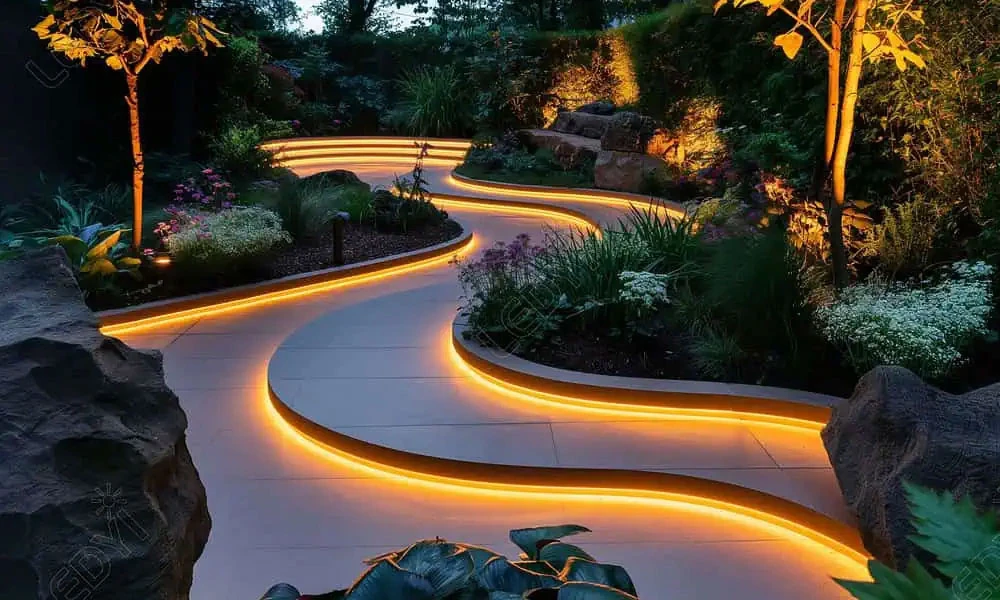Exploring Modern Lighting Solutions with Flexible LED Strips and LED Modules

Lighting has moved far beyond simple bulbs and fixtures. With the advancement of LED technology, spaces today can be transformed with solutions that are efficient, adaptable, and long-lasting. Both flexible LED strips and LED modules are central to this change, giving designers, businesses, and homeowners more control over how light shapes an environment.
Understanding Flexible LED Strips
Flexible LED strips are one of the most versatile lighting solutions available today. Unlike rigid fixtures, these strips can bend and adapt to different surfaces, making them ideal for areas where traditional lighting would not fit. From under-cabinet lighting in kitchens to accent lighting in retail stores, their ability to highlight spaces without bulky installations makes them popular.
They are lightweight, energy-efficient, and come in different color temperatures to suit various needs. Whether it’s warm lighting for a cozy space or bright, cool tones for work areas, flexible strips can adjust to fit the atmosphere. Installation is usually simple, which means both professionals and DIY users find them easy to apply to different projects.
In many projects, Flexible LED Strips play a central role in creating atmosphere. They allow you to emphasize textures, guide pathways, or highlight displays with subtle illumination. Their adaptability means they are not limited to a single purpose but can be applied across many different environments.
The Role of LED Modules in Lighting Systems
While strips offer flexibility, LED modules serve a different but equally important role. These modules are pre-packaged units of LEDs designed for focused applications. They are often used in signage, channel letters, and displays where consistent brightness and durability are required. Because of their design, they can be arranged to fit specific shapes or layouts, giving them an edge in specialized lighting tasks.
LED Module suppliers provide a wide range of options to meet different requirements. Modules vary in brightness, size, and waterproofing capabilities, making them suitable for both indoor and outdoor installations. Their reliability and structured design help businesses achieve consistent lighting in environments where visibility is critical.
Modules also excel in longevity and energy efficiency, which helps reduce costs associated with maintenance. For projects where lighting is a key element of communication or branding, suppliers ensure access to modules that deliver clarity and performance over time.
Comparing Flexible LED Strips and LED Modules
Both flexible LED strips and LED modules bring unique strengths. Strips are best for creating ambiance, decorative highlights, or general illumination in areas with irregular shapes. Modules, on the other hand, are designed for precision and focus, especially in commercial displays and architectural features.
For large projects, combining both can offer a balanced solution. For example, a retail space may use strips for ceiling accents and pathways while relying on modules for illuminated signage. This balance allows for both functional and aesthetic lighting within the same environment.
Choosing the Right Lighting Solution
Selecting the right option depends on the specific requirements of a project. Brightness is an important factor—strips are great for subtle and layered lighting, while modules deliver concentrated illumination. Durability matters too, especially in outdoor installations where waterproofing is essential. Energy efficiency should also be considered, as LEDs are designed to reduce electricity consumption compared to traditional bulbs.
When deciding between flexible strips and modules, it’s also important to consider the installation process. Strips are easier to install on curved or uneven surfaces, while modules require precise placement for uniform results. Both, however, share the benefit of long service life, which reduces the cost of replacement and maintenance over time.
Future of LED Lighting
The future of lighting continues to evolve with trends focused on sustainability and smart technology. Flexible LED strips and modules are becoming more integrated with control systems that allow dimming, color changes, and scheduling through mobile apps. This creates opportunities for personalization, energy savings, and better adaptability in different environments.
Another growing trend is eco-friendly design. Manufacturers are focusing on creating LEDs with reduced environmental impact, longer lifespans, and higher efficiency. As urban spaces demand more innovative lighting, solutions like strips and modules will continue to expand in functionality.
Customization is also playing a major role. With lighting now being an integral part of design, both homeowners and businesses are seeking options that can be tailored to specific moods, branding, or architectural features. Flexible solutions like strips and modular systems are well-positioned to meet these demands.
Conclusion
Flexible LED strips and LED modules are reshaping the way spaces are lit. Strips offer versatility and design freedom, while modules provide reliability and precision. Together, they create lighting solutions that go beyond simple illumination and focus on functionality, efficiency, and creativity.
Whether used in homes, commercial spaces, or outdoor environments, these options show how far LED technology has come. Making the right choice ensures that lighting not only serves its purpose but also enhances the overall experience of a space.
